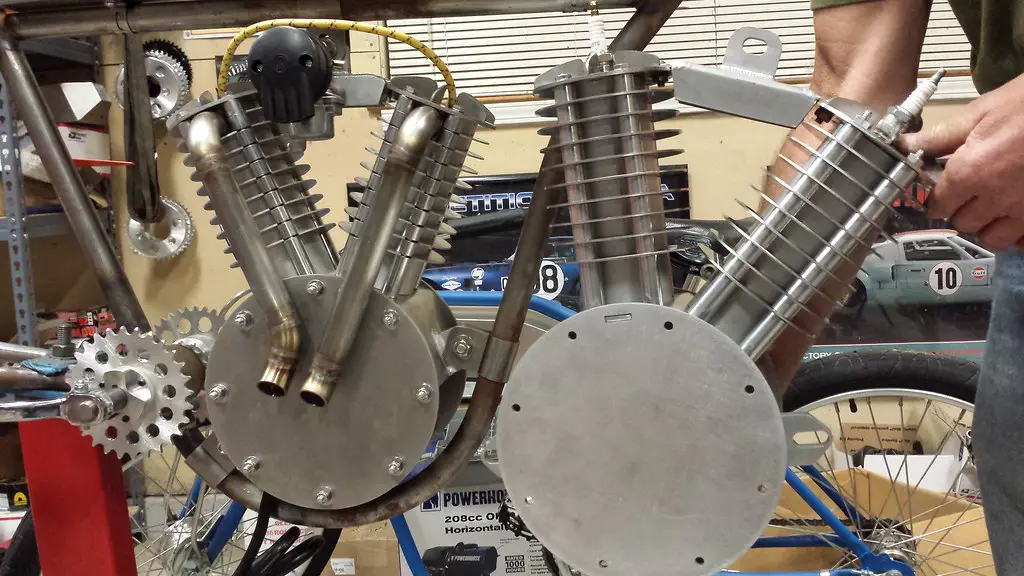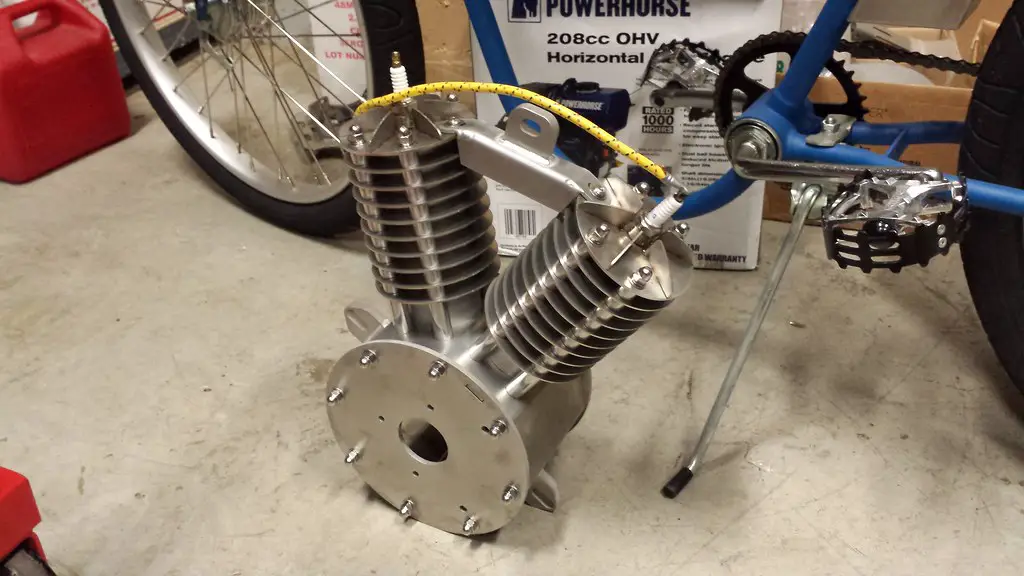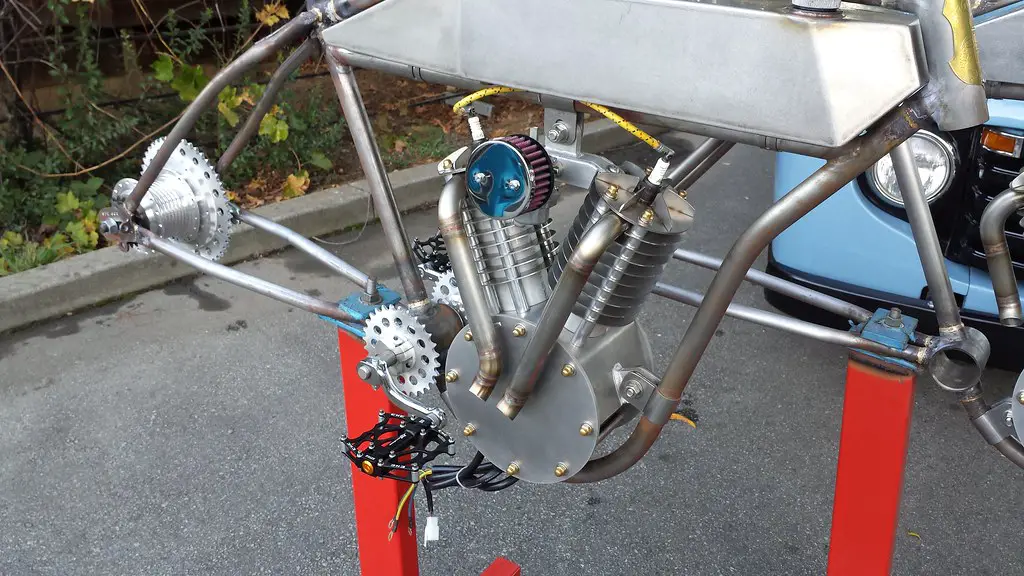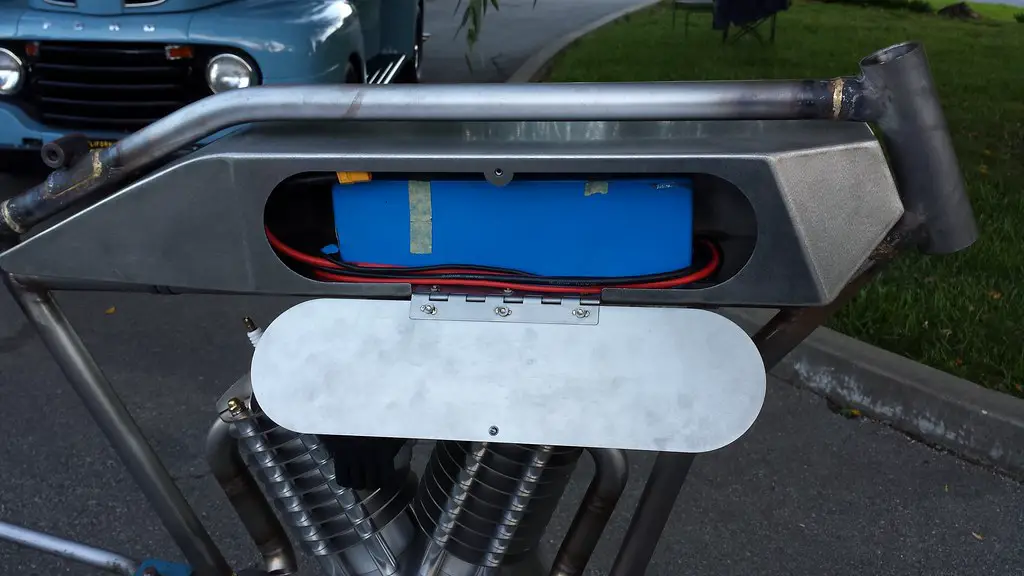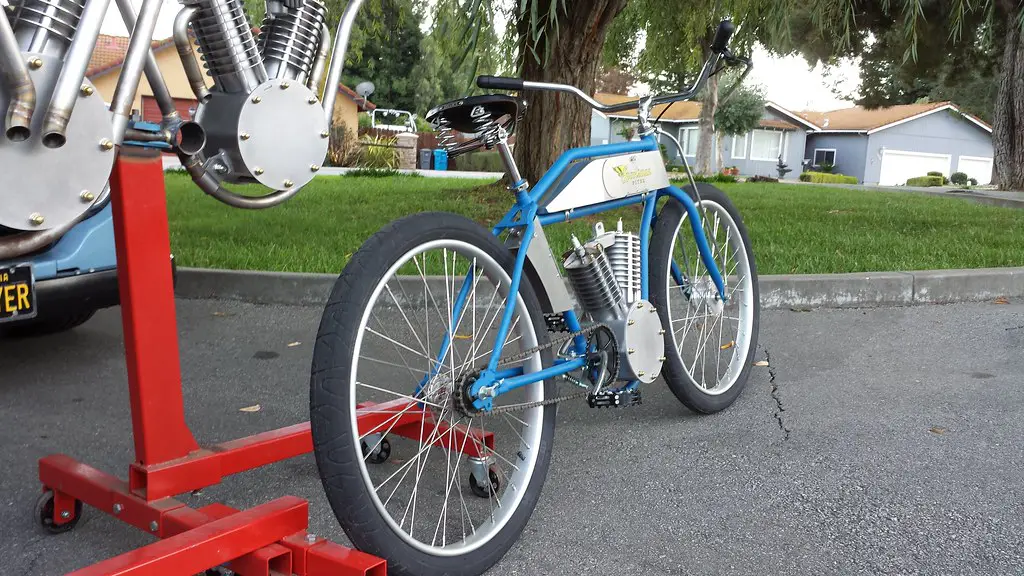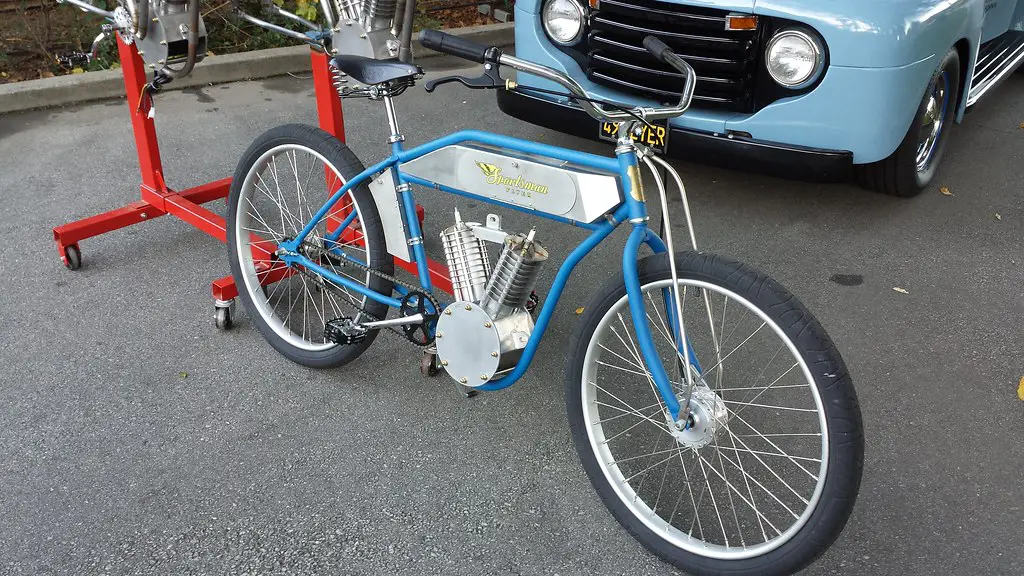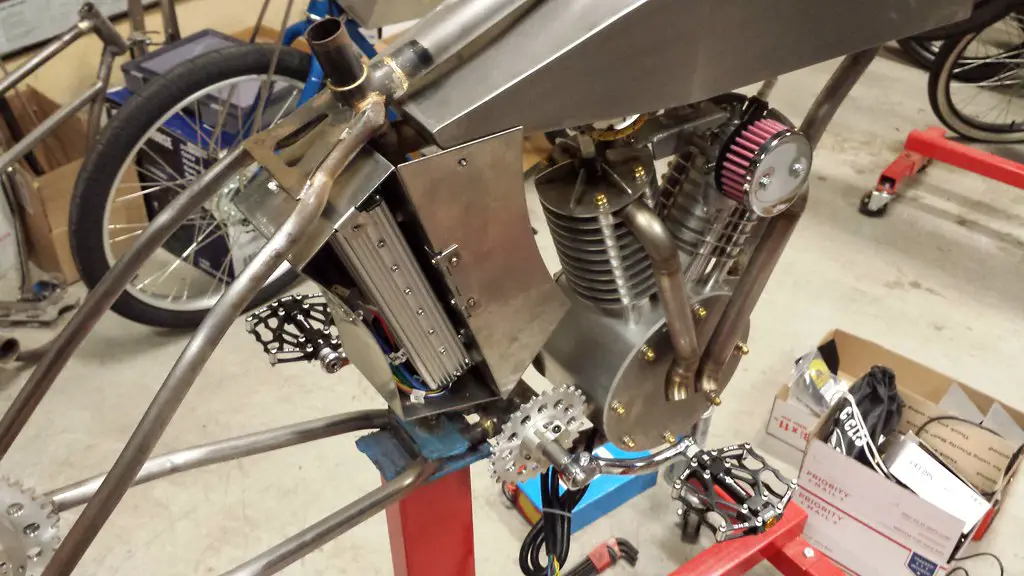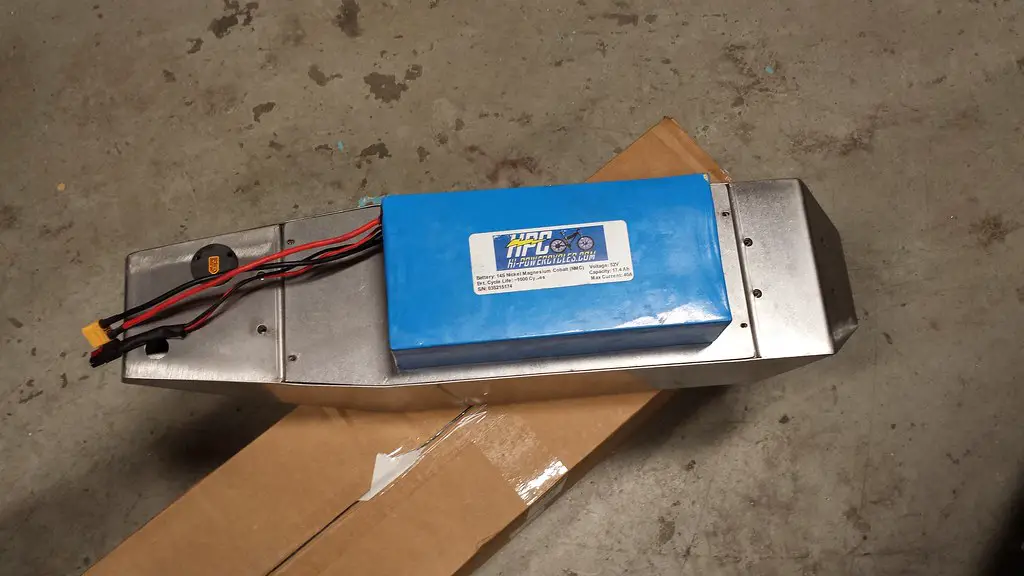Beautiful work, as always, Pat!
I think a 'fuel cap' would look nice but I would not put the charging port (or any other receptacle) under it. That would mean the charging port would face up, and be susceptible to getting water in it (use gravity to your advantage, not your detriment)!
Definitely the right idea to have it on the bottom, or side. Have a look at marine components - you can get that style of receptacle with a sprung cap that has a seal, to keep it clean / dry when not in use.
You DO want to be able to secure the battery with a strap, or friction fit with foam padding, but maybe consider NOT attaching it to the lid...instead anchor it to the tank itself. This way you can use a larger battery - stick one end in first, then the other, then strap into place. It can be longer than the opening in the tank. Strapping it to the lid might reduce that possibility.
Just using the 52V 17ah battery shown as an example...my suggestion (to achieve your stated goal of being better than the other ebikes presently available), is to aim higher. 72V 20ah is about what I would call a 'minimum' (if your chosen motor can handle it)...hey its just my opinion, but pretty much EVERYBODY who starts riding an ebike ends up wishing for more battery (range, or acceleration, or both).
EVEN IF you (or your customer) does not end up wanting more range / power, having a larger battery means each trip will use a smaller portion of its capacity, (shallower discharge), which will extend battery life considerably, with the added bonus of having more 'reserve range', reducing 'range anxiety'...which is a factor to some degree for almost every EV owner, especially at the beginning. This factor alone will improve marketability and satisfaction with your product.
Conversely, pretty much nobody is likely to complain 'this bike has too much range / too much power', unless it is actually popping violent wheelies (which it will absolutely NOT be doing)...and in any event, with the right controller you can always program limits to the performance anyhow, while preserving all the range benefits.
The ONLY downsides to a larger battery are weight and cost, but the negative impacts are pretty small relative to the performance increase, up to a point...and the 'sweet spot' stops at 72V (at this point in time), and 20 to 30ah.
I guess it all depends how you and your customers will use the bike, but given the look of it and your company's background in motorized bikes, I am betting in most cases it will be closer to motorcycle / scooter use, than to 'get a good workout, with a little help up the bigger hills'. In other words, the buyer for this particular ebike, IMO, will be less concerned about weight and price, and more concerned about range and power, than other ebike buyers who may want to ride something lightweight, and closer to a true bicycle.
Anyhow, all I am really saying, is as you design the various parts of this beautiful machine, don't make a design decision that might limit battery size (if a different approach would cost the same, but leave more room for the battery), even if at the moment you feel that you have 'more than enough room' for the battery. If you leave yourself 'room to grow' that is only a good thing

Cheers,
Doug



